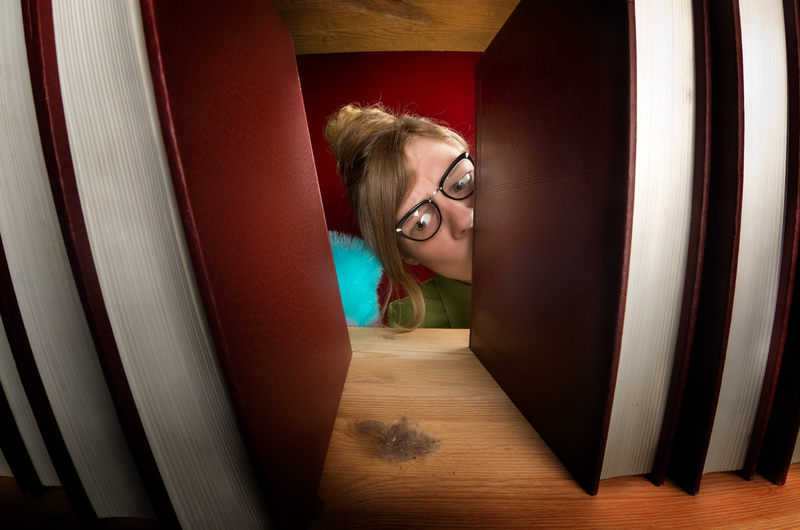Revitalize Your Living Area by Eradicating Damp: The Complete Guide
Dampness in a living area is more than an eyesore--it can wreak havoc on your home's structure, your belongings, and even your health. If you've spotted tell-tale damp patches, mysterious musty odors, or persistent mold growth, it's time to take action. Discover how to transform your living space by **eradicating damp** and reclaiming a healthy, welcoming environment for you and your family.

Understanding Damp: What Is It and Why Does It Matter?
Damp refers to unwanted moisture present within the structures of buildings. It is a widespread problem that affects homes of every age and style. Dampness can result from a variety of sources and, if left unchecked, can significantly damage your living space and compromise comfort.
Why Addressing Damp is Critical
- Health Concerns: Dampness encourages mold spores and bacteria, which can cause or exacerbate health issues such as asthma, respiratory problems, and allergies.
- Structural Integrity: Prolonged exposure to moisture can weaken walls, ceilings, and floors, leading to costly structural repairs.
- Property Value: Homes with evidence of damp or mold can plummet in value and deter potential buyers.
- Aesthetics and Comfort: Unsightly stains, peeling wallpaper, and persistent odors can make your living area uninviting.
By eliminating damp, homeowners not only protect their investment but also create a healthier, more attractive environment.
Common Causes of Damp in the Living Area
To successfully eradicate damp, it's important to identify the source. Damp can arise for several reasons, and targeting the root cause is key to a long-term solution.
Types of Damp Found in Living Spaces
- Rising Damp: Moisture drawn upwards from the ground through porous building materials, often affecting lower walls.
- Penetrating Damp: Water entering from the outside, typically through cracks or gaps in walls, roofs, or windows.
- Condensation: The most common cause of damp within modern homes, this occurs when warm, humid air meets cold surfaces, leaving behind moisture.
Other causes include leaking pipes, poor ventilation, and inadequate drainage. By recognizing these early signs, you can take action before extensive damage is done.
Spotting the Signs: How to Identify Damp Issues
Timely detection is critical to combating damp problems. Here's what to look out for:
- Musty Odors: Persistent earthy smells that linger even after cleaning.
- Mold and Mildew: Black, green, or white patches on walls, ceilings, or furnishings.
- Peeling Wallpaper or Paint: Blistering, flaking, or bubbling surfaces indicate moisture underneath.
- Damp Patches: Discoloration or stains on walls or ceilings, often with a tide mark.
- Condensation on Windows: Frequent or persistent water droplets, especially during colder months.
If you observe any of these symptoms in your living area, it's time to take action to eradicate damp.
Effective Methods to Eradicate Damp in Your Living Area
Completely removing damp from your living area requires a combination of targeted fixes and preventive strategies. Let's explore proven methods to banish dampness for good.
1. Improve Ventilation
- Install or use extractor fans in kitchens and bathrooms to expel moist air.
- Open windows regularly to allow fresh air circulation, reducing humidity.
- Use trickle vents or air bricks to maintain airflow without sacrificing warmth.
*Good ventilation helps in preventing condensation damp, a common issue in modern, well-sealed homes.*
2. Use a Dehumidifier
- Place a reliable dehumidifier in your living areas, especially during damp weather.
- Monitor humidity levels and maintain them below 60% to discourage mold growth.
3. Fix Leaks and Plumbing Issues
- Inspect and repair leaking pipes, faucets, or radiators promptly.
- Seal gaps around windows and external doors to prevent water ingress.
4. Address External Issues
- Check guttering and downpipes for clogs or leaks, ensuring water is directed away from the building.
- Repair damage to exterior walls, roofs, and chimneys to block rain penetration.
5. Apply Damp-Proof Solutions
- Install or renew a damp-proof course (DPC) in older buildings suffering from rising damp.
- Use specialist damp-proof paints or sealants on walls prone to moisture.
6. Increase Heating Efficiency
- Maintain a consistent, moderate temperature in your living area throughout the colder months.
- Use insulation to keep internal surfaces warmer, reducing condensation risk.
By combining these strategies, you can eliminate dampness and transform your living area into a dry, comfortable, and inviting space.
Long-Term Prevention: Keeping Damp Out for Good
Once you've successfully dealt with a damp problem, it's essential to embrace long-term prevention methods. Here's how you can keep your living area vibrant and damp-free:
- Regular Inspections: Assess your home every season for early signs of moisture, leaks, or ventilation issues.
- Monitor Humidity: Use a hygrometer to regularly check the moisture level in the air--ideally, it should be between 40-60%.
- Maintain External Defenses: Keep gutters, drains, and downpipes clear and in good repair.
- Improve Insulation: Insulate your home's walls, floors, and loft to minimize condensation and loss of heat.
- Encourage Air Flow: Avoid pushing furniture directly against outside walls, where air can become trapped and dampness can form.
These preventive measures are key to revitalizing your living area by keeping it dry, healthy, and comfortable.
The Benefits of Eradicating Damp in Your Living Space
Solving your damp problem doesn't just return your living area to its original glory--it brings a wealth of additional benefits:
- Healthier Living: Reduced exposure to mold and bacteria means fewer allergies and respiratory issues.
- Improved Comfort: Your home will feel fresher, warmer, and more welcoming.
- Enhanced Appearance: Say goodbye to stained walls, peeling paint, and musty odors.
- Better Energy Efficiency: With proper insulation and dry walls, your space retains heat more effectively, lowering energy bills.
- Increased Property Value: A dry, healthy home attracts buyers and commands a higher price.
Mistakes to Avoid When Combating Damp
While many solutions can be implemented by homeowners, there are common pitfalls to avoid when tackling damp issues:
- Ignoring Early Signs: Waiting until the problem becomes visible can mean more significant damage and costlier repairs.
- Painting Over Damp: Applying a fresh coat of paint without addressing the underlying damp traps moisture, worsening the problem.
- Using Temporary Fixes: Stick-on dehumidifiers or sprays provide short-term relief but don't solve the core issue.
- Poor Ventilation: Sealing up homes for warmth without providing airflow can create a breeding ground for condensation and mold.
When in doubt, seek professional advice from a damp specialist to ensure comprehensive and lasting results.
When Should You Call a Damp Specialist?
Some damp problems are easy to fix yourself--improving ventilation, using a dehumidifier, or clearing blocked gutters. However, for persistent or severe issues, a specialized approach is essential.
- Extensive Mold Growth: Professional removal is recommended to address health risks and prevent regrowth.
- Serious Structural Damage: If you notice crumbling mortar, decayed timber, or large damp patches, a surveyor or contractor can assess the situation.
- Rising Damp: This often requires installing or repairing a damp-proof course, a task best handled by experts.
A professional damp surveyor can pinpoint problems, suggest the most effective solutions, and even carry out necessary repairs, giving you total peace of mind.
DIY Remedies: Effective Quick Fixes for Minor Damp Issues
For small, surface-level damp problems, these DIY remedies can make a real difference:
- Baking Soda: Sprinkle on affected walls to absorb moisture and neutralize odors.
- Vinegar Solution: Mix equal parts water and white vinegar, spray on moldy areas, and wipe clean.
- Calcium Chloride Dehumidifier: Place bowls in trouble spots to draw moisture from the air naturally.
*These solutions are not substitutes for professional treatment if you're facing more serious damp problems, but they can provide relief for minor issues while you investigate further.*

Transform Your Living Space by Eradicating Damp for Good
Eradicating damp is a vital step to revitalize your living area. By understanding the causes, identifying the signs, implementing multi-pronged solutions, and embracing preventative care, you can turn any dreary, damp-affected room into a fresh and welcoming haven.
Remember: The key is early action and a commitment to both fixing the problem and preventing it from returning. Your home deserves the best care--it's time to enjoy a healthier, happier space by eradicating damp once and for all.
Frequently Asked Questions (FAQs) About Damp in Living Areas
-
Can damp really affect my family's health?
Yes, long-term exposure to mold and excess moisture can trigger respiratory issues, allergies, and asthma, especially in vulnerable individuals. -
Is it expensive to fix damp problems?
The cost varies based on the cause and severity. Simple fixes like improving ventilation or using a dehumidifier are affordable, but severe structural damp may require professional intervention. -
Will painting over mold remove it?
No, always treat the root cause before redecorating. Painting over mold only hides the problem temporarily and allows it to return. -
Does new construction mean my home is safe from damp?
Not necessarily. Modern homes may be more prone to condensation due to better insulation and less natural ventilation.
Revitalize your living area today by eradicating damp--and enjoy a fresher, healthier, and more beautiful home for years to come!